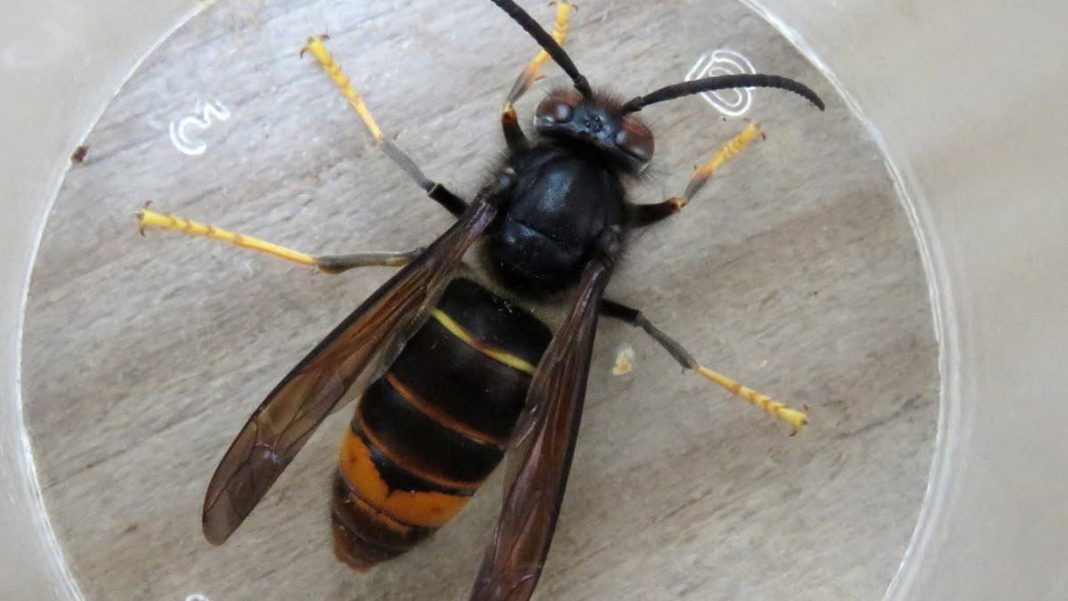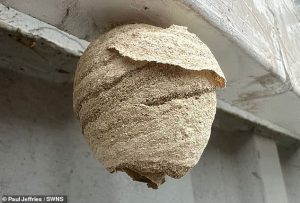Asian Hornets Invade Northern Ireland: First Confirmed Sightings
Key Takeaways:
- First confirmed Asian Hornet sightings in Northern Ireland, with multiple reports in Belfast
- Authorities warn of serious threat to native pollinators and biodiversity
- Public urged to report sightings via Asian Hornet Watch app immediately
Asian Hornets have been confirmed in Northern Ireland for the first time, sparking urgent warnings from environmental authorities. At least two of the invasive insects were discovered in eastern Belfast within the past week, according to the Northern Ireland Environment Agency.
Northern Ireland’s Environment Minister Andrew Muir stated: ‘This is a harmful species that I do not wish to see becoming established in Northern Ireland. It presents a serious threat to both biosecurity and local ecology, particularly valuable pollinating insects.’
Emergency Response Underway
The first Asian Hornet in Northern Ireland was spotted in Belfast’s Dundonald area on October 10 by a member of the public. Subsequent sightings suggest at least one active nest in the region.
‘Officials are working to establish location and remove any potential nest in the area,’ confirmed the Department of Agriculture, Environment and Rural Affairs. Authorities emphasize that suspected nests should never be disturbed and sightings must be reported immediately through the Asian Hornet Watch app.
UK-Wide Invasion Pattern
While this marks Northern Ireland’s first encounter, Asian Hornets have been spreading aggressively across the UK since their initial 2016 sighting in Gloucestershire. The species has established significant presence in Kent and other southern counties.
According to latest government data, 245 confirmed Asian Hornet nests have been destroyed since 2016, with 52 nests eliminated last month alone – 41 of them in Kent.
Ecological Threat Assessment
The Asian Hornet (Vespa velutina) poses devastating risks to native insect populations. A University of Exeter study found approximately 1,400 different species in Asian hornet stomach contents, with honey bees being their preferred prey.
Christopher O’Sullivan, Minister of State for Nature, Heritage and Biodiversity in Cork, emphasized: ‘We must take even a single sighting very seriously. Members of the public are our eyes on the ground. Early detection is key if we are to prevent the establishment of this invasive species.’
Identification Guide: Asian Hornet vs European Hornet
- Legs: Asian Hornets have bright yellow leg tips; European hornets have entirely brown legs
- Size: Asian Hornets are smaller and more slender
- Head: Vibrant orange coloring on Asian Hornet heads
- Body: Almost entirely black with fine yellow stripes and orange segment near stinger
Professor Helen Roy, ecologist at UKCEH and University of Exeter, explained: ‘One of the easiest ways to identify them is by looking at their legs. Yellow-legged hornets have yellow and brown on their legs, whereas European hornets’ legs are only brown.’
Safety and Reporting Protocol
Authorities warn that Asian Hornet stings can be fatal for people with allergies. Observe nests from at least 10 feet away and avoid sudden movements.
Reporting methods:
- Asian Hornet Watch app (Apple/Android)
- UK Centre for Ecology & Hydrology online form
- Email: alertnonnative@ceh.ac.uk with photo
- Non-native Species Secretariat website
Public vigilance is crucial for containing this ecological threat before Asian Hornets become permanently established across the UK.









